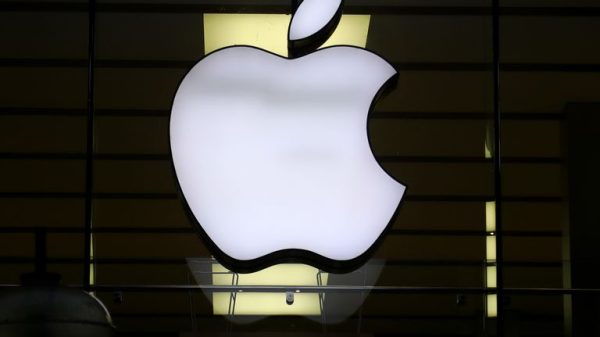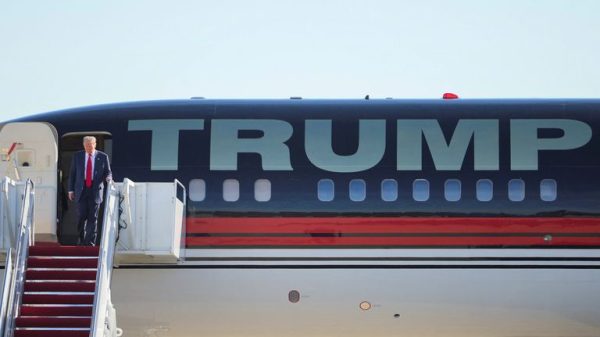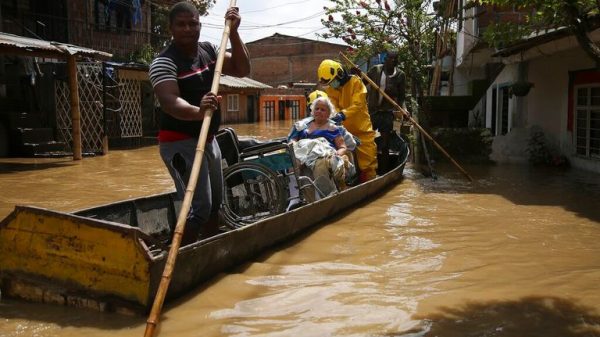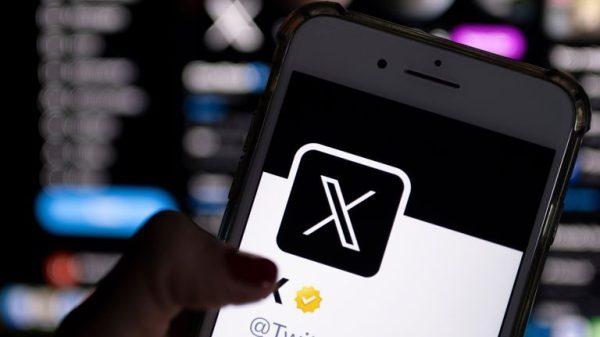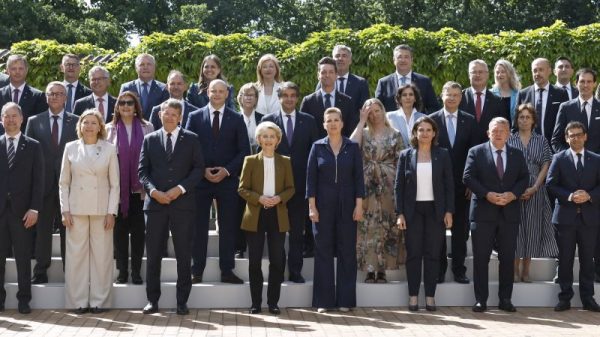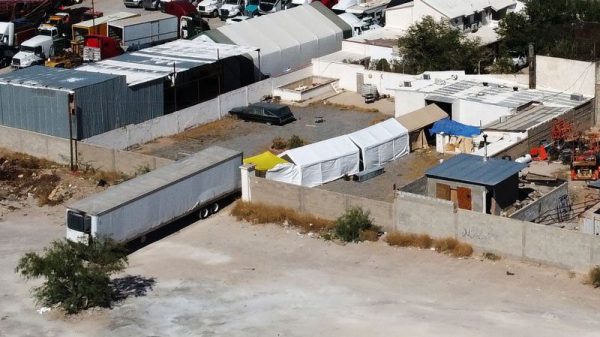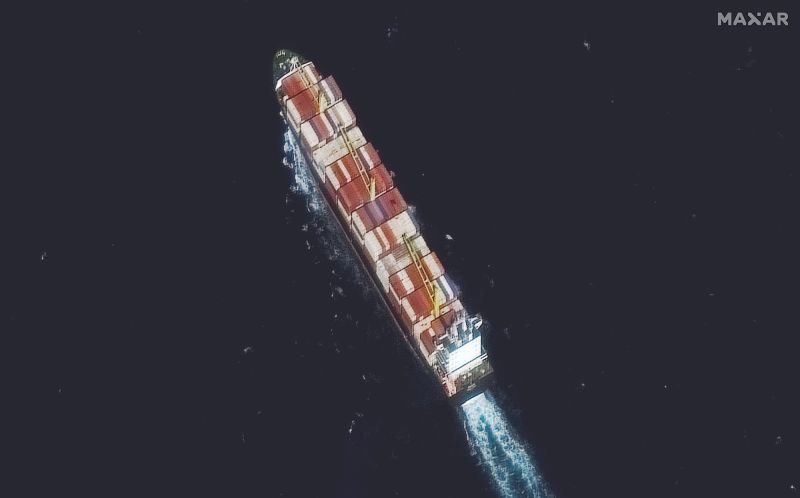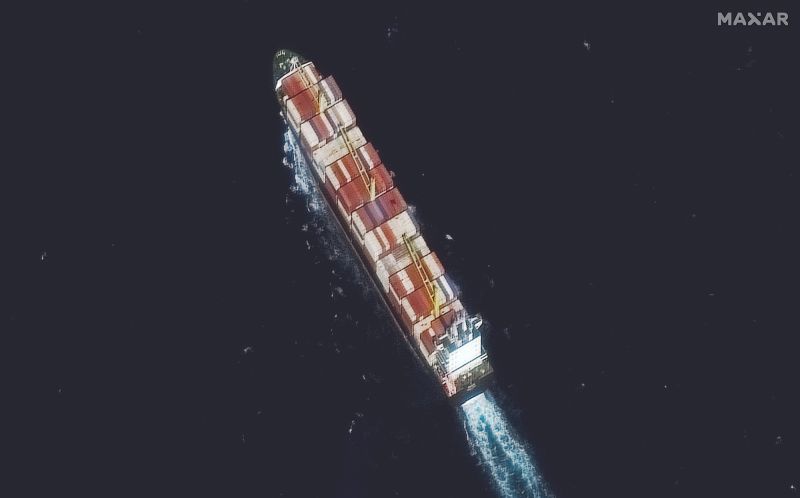
The first of two vessels carrying 1,000 tons of a Chinese-made chemical that could be a key component in fuel for Iran’s military missile program has anchored outside the Iranian port of Bandar Abbas on Thursday, ship tracking data shows. It could be a signal that Iran’s missile production is back to business as usual after the devastating, and embarrassing, attacks by Israel on key factories last year.
The ship, Golbon, left the Chinese port of Taicang three weeks ago loaded with most of a 1,000-ton shipment of sodium perchlorate, the main precursor in the production of the solid propellant that powers Iran’s mid-range conventional missiles, according to two European intelligence sources.
The sodium perchlorate could allow for the production of sufficient propellant for some 260 solid rocket motors for Iran’s Kheibar Shekan missiles or 200 of the Haj Qasem ballistic missiles, according to the intelligence sources.
The shipment comes as Iran has suffered a series of regional setbacks with the collective defeat suffered by its allies: The fall of Bashar al-Assad in Syria and Hezbollah’s losses in Lebanon. Following Israel’s strike on Iran’s missile production facilities in October, some Western experts believed it could take at least a year before Iran could resume solid-propellant production. This delivery points to Iran being not far from – or that they could already be back to – the production of its missiles.
The shipment was purchased on behalf of the Procurement Department of the Self Sufficiency Jihad Organization (SSJO), part of the Iranian body responsible for the development of Iran’s ballistic missiles, according to the sources.
The sources could not say if the Chinese government knew of the shipments prior to media reporting about their movement late January. The delivery of sodium perchlorate in itself is not illegal, nor does it breach Western sanctions.
China’s Foreign Ministry spokesperson Mao Ning told reporters in January that she was not aware of the specifics of the case, but that China has always abided by its export control laws as well as the country’s international obligations.
Sanctions backdoor
The United States and United Kingdom have levied sanctions against the Islamic Republic of Iran Shipping Lines company, with the State Department saying the firm is the “preferred shipping line for Iranian proliferators and procurement agents.”
The UK treasury said the company was “involved in hostile activity” by Iran and highlighted its links to the Iranian defense sector.
Both the Golbon and Jairan are under US sanctions.
Meanwhile, China has remained a diplomatic and economic ally for sanctions-hit Iran, decrying “unilateral” US sanctions against the country and welcoming Tehran into Beijing and Moscow-led international blocs like the Shanghai Cooperation Organization and BRICS.
China also remains by far Iran’s largest energy buyer, though it has not reported purchases of Iranian oil in its official customs data since 2022, according to analysts.
Despite China’s historic ties to Iran’s defense sector, observers say Beijing has scaled back security ties over the past decade as it seeks to bolster relations with Saudi Arabia and other Gulf states. The US has in recent years, however, sanctioned a number of Chinese entities for alleged roles supporting Iranian military drone production. Recent joint naval drills between China, Iran and Russia have also signaled a potential deepening of government to government strategic ties.
A key ingredient
Although sodium perchlorate trade is not restricted by Western sanctions, it can be chemically transformed into ammonium perchlorate – a fuel and oxidizer which is a controlled product.
“There really aren’t very many alternative things” that the chemical in the Chinese deliveries can be used for, aside from for rocket propellants, fireworks and fuel, he said, adding: “perchlorates have a fairly narrow range of uses.”
Increasing controls on perchlorates in the West have seen China become a major alternative supplier of such chemicals, he said.
“This is just the latest shipment in a decades-old pattern,” Lewis added.
Supply troubles
Defense analyst Hinz said that while Iran has previously boasted of its ability to produce ammonium perchlorate themselves, this delivery hints at supply chain bottlenecks as domestic precursor supply has been unable to meet missile production needs. It’s a problem even countries like the US can face, he added.
Hinz said that Iran’s solid propellant production infrastructure has “dramatically expanded in the last few years – and potentially even since October 7, (2023),” with new sites built and existing ones enlarged.
Kheibar Shekan missiles have a range of 880 miles (around 1,420 km), with their Haj Qasem cousins able to reach targets 900 miles (around 1,450 km) away, according to the Western intelligence source. Although not the most technically advanced weapons in Iran’s arsenal, their range does make them valuable for attacks on Israel.
Hinz said that variants of such missiles have been used by Iranian-backed Houthis in Yemen against Israel, despite the distance ostensibly outstripping the missiles’ standard range. Modifications of the warhead mass or secondary propulsion units could lengthen their reach, he said.
Solid propellant is also used in Iran’s short-range missiles – like those used in the past against US bases in the region and in exports to Russia, Hinz said. Iran’s largest and most powerful ballistic missiles typically use liquid propellant.
According to the Israel Defense Forces, wreckage from at least one Kheibar Shakan missile was recovered following Iran’s October 1, 2024 barrage against Israel. Analysis from one of the Western sources confirmed that some 50 medium-range missiles with solid propulsion were fired at Israel by Iran in this attack.
Iran’s arsenal is believed to hold “over 3,000 ballistic missiles,” US Air Force Gen. Kenneth McKenzie told Congress in 2023 – but exact numbers of each type of missile are unknown.







